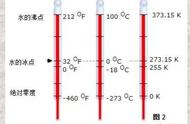工程热力学起源于19世纪欧洲,英文是Engineering Thermodynamics
Engineering 工程 →→应用 Thermo 热能 →→能源 Dynamics 动力→→发动机
也就是说应该翻译为工程热动力学,不是简单的力学。
工程热力学是研究热能与其他形式的能量(尤其是机械能)之间相互转换规律的一门学科。
由于在现代各个生产领域中所遇到的大多数技术问题,乃至自然界中的许多现象都与热能的传递与转化有关,而且几乎任何一种形式的能量最终都是以热能的形式耗散于环境及宇宙之中,因此研究热能的传递、转换与控制的工程热力学是大多数工科专业的一门重要的技术基础课程。
涉及的专业领域很广:
能源动力、建筑环境、航空航天动力、化工等专业都要学习多学时的工程热力学。
环保、安全、给排水、轮机、机械专业、食品加工专业等都要学习少学时的工程热力学。

工程热力学先辈,19世纪
Engineering thermodynamics is a discipline that studies the mutual conversion of heat energy and other forms of energy, especially mechanical energy.
Because in modern most of the technical problems encountered in production areas, and even many phenomena of nature are associated with the transfer and transformation of heat energy, and almost any form of energy in the end are in the form of heat dissipation in the environment and the universe, so the heat transfer, conversion and control of engineering thermodynamics is an important technology of most engineering professional basic course.
Professional fields involved is wide:
Energy power, built environment, aerospace power, chemical engineering and other majors have to learn more hours of engineering thermodynamics.
Environmental protection, safety, water supply and drainage, turbine, machinery, food processing and other major to learn less hours of engineering thermodynamics.
,














